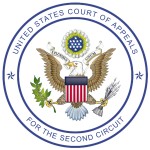The taxpayer in Kurek v. Commissioner was a sole proprietor in the business of home renovations. He reported his business income on Schedule C and hired approximately 30 workers to assist him on various projects. He did not: issue Forms 1099 or W-2 to any of the workers, offer employee benefits, carry unemployment insurance or workers compensation insurance. An IRS examination determined that the workers were employees for FICA, FUTA and federal income tax withholding purposes. Mr. Kurek petitioned the Tax Court.
Whether a worker is classified as an employee or independent contractor is a facts and circumstances test based on a variety of factors. The determinative question, however, is whether the employer has the right to control and direct the worker, even if he did not actually do so.
Mr. Kurek had some pretty good facts in his favor: None of the workers worked full-time; each worker was paid on a project-by-project basis; each worker set his own hours and schedule; each worker used his own tools; workers could work for other construction groups; and workers were replaced if they failed to meet a deadline. All of these facts weigh in favor of independent contactor status.
However, the Tax Court found otherwise. The Court emphasized that the taxpayer (1) exercised ultimate authority over the workers as to their job responsibilities, (2) approved the quality of their work, and (3) paid them weekly rather than at the end of the project. It also considered the fact that only the taxpayer communicated with the homeowners, and that he alone was responsible for the success or failure of the projects. It gave considerably less weight to the factors in favor of independent contractor status and concluded that the workers should be classified as employees because the taxpayer failed to prove that he did not control them.
The taxpayer also did not qualify for Section 530 relief because he did not file a Form 1099 for any of the workers.
Read the opinion here:
Kurek v. Commissioner, T.C. Memo 2013-64



